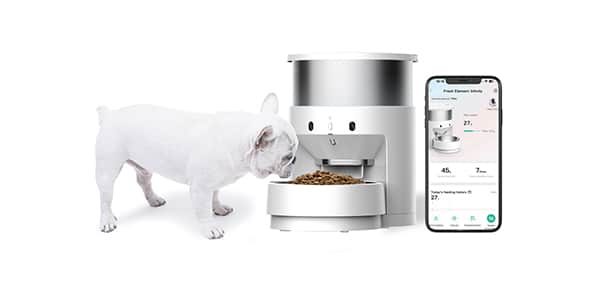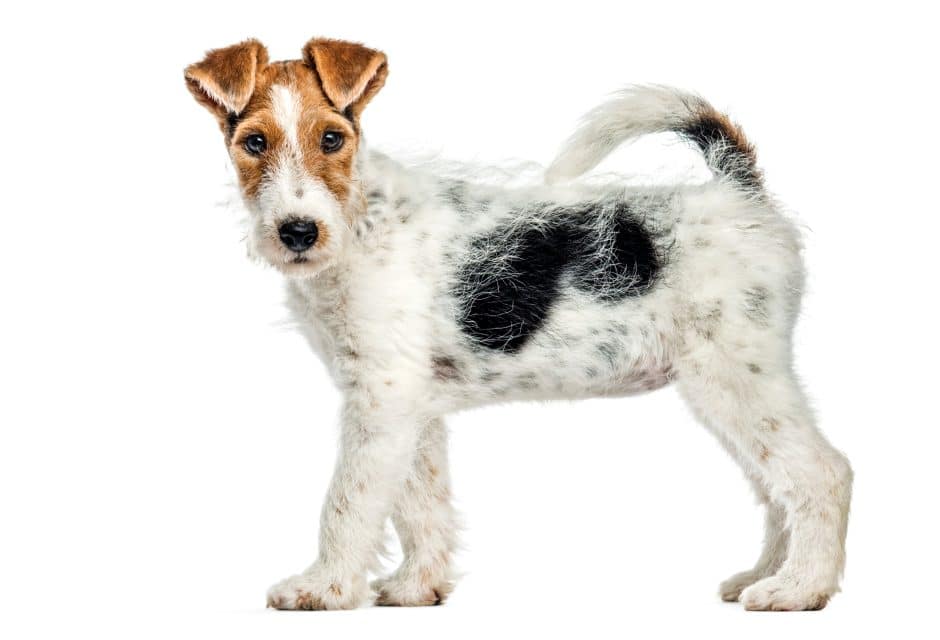

Secrets to Good Canine Health
What to include and what to avoid
Dog-park chat session: just a few folks passing the time while their four-legged friends romp nearby. The talk turns to food and who feeds what. The responses are as varied as the dogs in the park; tinned, kibble, homemade, avoid wheat, protein is the most important, never feed bones, raw food is best. Everyone feels strongly about their opinion and the couple with the new pup just look confused.
Conflicting information about dog food is everywhere. Companies vie for market share by highlighting what they consider to be unique features of their products, and the Internet is full of websites about dog foods. Groomers and trainers may tell an owner one thing, while her vet has a completely different viewpoint.
Since diet plays such an important role in health, it’s important to choose the right dog food, but all of this information can leave you more baffled than enlightened. Here are a few secrets to making a better choice when selecting your dog’s food.
Secret #1: Read the ingredient list
Knowing exactly what is in your dog’s food can have a huge impact on her health. If your dog has known food sensitivities, reading the list of ingredients is critical. Often a food will be called “lamb and rice,” but upon closer examination, the ingredient list will reveal that it also contains chicken, wheat, and corn. Ingredients are listed in order by weight, from greatest to least.
If your dog doesn’t have allergies, these are the top four things to look for:
1. A single meat (protein) source as the first ingredient. You should be able to tell what type of meat was used; poultry meal is a much better ingredient than meat meal.
2. Whole meat or meat meal. Meat by-products are made from the meat parts of the animal such as the organs, and are generally lower-quality ingredients handled less carefully than whole meats so avoid by-products. Whole meat contains a lot of water, while meat meal is whole meat that has been cooked and dried. When whole fresh meat is followed by a grain in an ingredient list, it means that, once the water has been removed, there are actually more grains than meat in the food. If that is the case, look for a meat meal in the list of ingredients as well to ensure that there is enough meat protein in the food. The type (venison, rabbit, beef…) of whole meat/meat meal should be identified; avoid mystery meats!
3. Whole grains or whole-grain meals. Some of the grain processing products (like corn gluten feed) are low-quality filler and should definitely not be at the top of the ingredient list, if present at all.
4. Vitamins and minerals. Some of those ingredients with hard-to-pronounce names like riboflavin are actually added vitamins and minerals important for a properly balanced diet. The presence of whole fruits and vegetables in a food does not usually add significant vitamins or minerals, however, they can be a source of some phytonutrients and fiber.
The top four things to avoid:
1. Splitting. Grains can be processed into many different forms. By listing each of these separately, the manufacturer can push desirable meat ingredients higher on the ingredient list, when, in fact, if you were to add up all the different parts of the grain included on the list, the grain would actually come out on top. Be wary of foods that list one grain split into many variations such as wheat flour, wheat bran, wheat middlings, wheat shorts, and wheat germ.
2. Preservatives. Preservatives are necessary to ensure an adequate shelf life for dry foods, but some people worry about the use of artificial preservatives such as BHA, BHT, and ethoxyquin. While these have been tested and approved as safe for use, if you are concerned over the use of artificial preservatives, you can look for a food that is preserved with mixed tocopherols (forms of vitamin E). These foods will typically have a shorter shelf life, so make sure you check that before buying as well: the food should have a expiry date that’s at least six months away.
3. Generic terms. A higher quality dog food will clearly identify the source of the meat (e.g., chicken, lamb, duck, etc) or the source of the fat (e.g., poultry fat, soybean oil, etc) as opposed to just listing “meat” or “fat.”
4. Additives. Some foods contain sugars like glucose, fructose, cane molasses, or corn syrup. These are unnecessary in a dog food. Also, check the list of ingredients for other additives such as artificial colours and flavours; a small amount may make the food more appealing to your dog, but you definitely want to avoid a food that contains a lot of added colours and flavours, extra unnecessary chemicals generally present to make the food more appealing to you, the dog-food-purchaser. Other additives like glucosamine, yucca, and probiotics are generally harmless, but they are not usually added to the food at a high enough level to have any effect. If you want to add these to your dog’s diet, it is better to
Secret #2: What’s the deal with wheat?
A lot of dog foods advertise “wheat-free” as the new, big thing. Does this mean that dogs should not be eating wheat? There is no reason why a healthy dog without a wheat allergy or intolerance should not eat wheat. Wheat is commonly used in dog food because it is readily available and it provides a great source of energy and a good source of protein when blended with an animal protein such as chicken.
Food allergies are caused by a reaction to a protein, and since wheat contains protein, dogs can develop an allergy to it. However, because wheat is present in so many foods, dogs that are prone to developing allergies are very likely to develop an allergy to wheat. A dog can just as easily develop an allergy to buffalo if they are on a buffalo-based diet when they start to develop the allergy. Bottom line: if your dog doesn’t already have an allergy to wheat, there is no need to worry about buying a wheat-free food. However, if your dog is prone to developing allergies or her parents have allergies to wheat, it may be safer to avoid it.
Secret #3: Good fats vs. bad
Dogs don’t get heart disease related to a high-fat diet the way that humans do, but there are some types of fat that are better for dogs than others. Dogs require both omega-6 and omega- 3 fatty acids in their diet in order to maintain proper skin and coat health. Omega-6 fatty acids are found in meat products, so most dogs don’t require omega-6 supplements. Omega-3 fats are found in plant oils and fish oil such as salmon, flax, canola, and soybean oil, and the recommended dose of omega-3 fat is 175 mg/kg body weight.
You may read or hear that feeding too much fat can cause pancreatitis. In many cases, we don’t know what causes pancreatitis; however, it commonly develops following the ingestion of a large quantity of fat. Typically, an owner will report that the dog got into the turkey and gravy or the greasy garbage. There may have been an underlying condition present prior to the dietary indiscretion and the combination of the two things results in pancreatitis. Small-breed dogs like Miniature Schnauzers seem to be prone to pancreatitis more than large breeds. The classic symptoms of pancreatitis are appetite loss, vomiting, diarrhea, painful abdomen, and fever. It is unlikely that a high-fat diet alone will cause pancreatitis but that doesn’t mean we should be feeding a highfat diet to our dogs. Typical diets should contain between 10 and 15 percent fat with a portion of that being omega-3 fat, usually from flax seed or fish oil.
Secret #4: Tinned food vs. dry food
Tinned or “wet” dog food can be a great addition to your dog’s diet. It can help encourage picky eaters to eat and it can be a special treat for a deserving dog. Dry dog food has a greater caloric density when compared to tinned dog food, so for dogs that need to eat a little amount of food to get the greatest calories (e.g., puppies) it may be better to go with a dry kibble diet. Dogs that need to eat more but consume less calories (e.g., overweight dogs) may do better with a tinned diet.
Tinned dog food contains about 70 percent moisture, while dry dog food contains about 10 percent moisture. If you have a dog that needs to consume more water—such as a dog with bladder stones—feeding a wet food may be a good way of getting that water into her. Both wet and dry food can provide a nutritionally balanced diet and each has advantages in certain situations, so it is really an individual choice for the owner of the dog.
Secret #5: Fiber vs. Filler
One of the issues highlighted in the media is the use of “fillers” in dog food. Fillers are defined as ingredients with no nutritional value that are added to some dog foods to lower the caloric content (or to make the food cheap to produce). Fillers may be beneficial in some diets such as weight loss or diabetic diets. Fillers are actually fiber and, as we all know, you need a little fiber in your diet to keep the tummy happy. Fillers or fiber ingredients that are often used in diets include: wheat bran, rice hulls, guar gum, yucca, cellulose, psyllium hulls, whole flax seed, whole canola seed, and soybean hulls.
So who should be eating diets with fiber in them? All dog foods should have a little fiber in them. Normal foods contain between one and five percent fiber. This fiber is necessary, since all dogs need to eat a little fiber to help keep their gastrointestinal tract functioning properly.
Fiber can also be beneficial for dogs that need to lose weight because it helps keep them feeling full longer. Weight-loss foods may have between 10 and 15 percent fiber. This fiber lowers the calorie content of the food so you can continue to feed the same amount while feeding fewer calories. Weight-reduction diets should not be fed to dogs that do not need to lose weight, such as pregnant or lactating bitches and dogs that are already on the slim side.
Some dogs with chronic gastrointestinal disease such as inflammatory bowel disease (IBD) or irritable bowel syndrome (IBS) or chronic dietary allergies do very well with added fiber in their diets. These diets contain between 10 and 15 percent fiber. It is important to note that not all dogs with IBD or IBS do well with high-fiber diets and there is no way of knowing which diet is going to work for your dog, so there may be a bit of trial and error involved in figuring out what your dog needs.
Secret #6: Add fresh foods
Adding fresh fruits and veggies to your dog’s regular food can be a healthy way to introduce some variety. If you are supplementing commercial kibble, make sure that fruits and veggies don’t make up more than 10 percent of your dog’s diet. Introduce new fruits or veggies slowly to ensure they don’t cause gastrointestinal upset.
If you want to add meat to your dog’s diet, lean cooked meats without seasoning or sauces are the best choice. Raw meaty bones are commonly added by many people and generally loved by dogs. They have benefits such as contributing to a healthier mouth and gums and providing recreational chewing but feeding raw bones can be risky. Large hard bones, such as beef bones, can damage teeth, and other bones may cause choking. Bones may be very rich and lead to stomach upset. If you decide to feed bones, make sure they are not cooked and keep an eye on your dog while he chews to make sure he doesn’t choke. The bone should be large enough that your dog cannot swallow it whole.
Secret #7: Consider your dog’s life stage and activity level
A dog’s nutritional needs change throughout her life. A growing puppy needs a different food than a senior dog and a highly active agility dog needs a different diet than his couch potato cousin. When selecting a food, look for one that is geared towards your dog’s special needs. Healthy senior dogs typically require a lower calorie food with slightly higher protein levels, and they may require more vitamins and minerals.
Growing puppies’ requirements will depend on their breed. Overfeeding a rapidly growing large-breed dog can contribute to skeletal diseases such as osteochondrosis and hip dysplasia. Feeding inappropriate levels of calcium and phosphorus can also lead to developmental problems. A large-breed puppy food that allows for slow growth is an ideal choice. Toy and small breeds may require higher energy foods because they have higher energy needs. Choosing a small breed puppy food will provide them with the calories and nutrient density they need for optimal growth.
Foods for adult dogs should be chosen based on their lifestyle. Highly active dogs or dogs that have trouble keeping on weight will need a food that is more calorie dense. Quiet, inactive dogs may need a light or reduced-calorie food to keep them from putting on too many extra pounds.
Armed with these secrets to canine good health, you are ready to make an informed choice on what to feed your dog—and hold your own at the next dog-park discussion panel!
Join the newsletter and never miss out on dog content again!
"*" indicates required fields
By clicking the arrow, you agree to our web Terms of Use and Privacy & Cookie Policy. Easy unsubscribe links are provided in every email.





